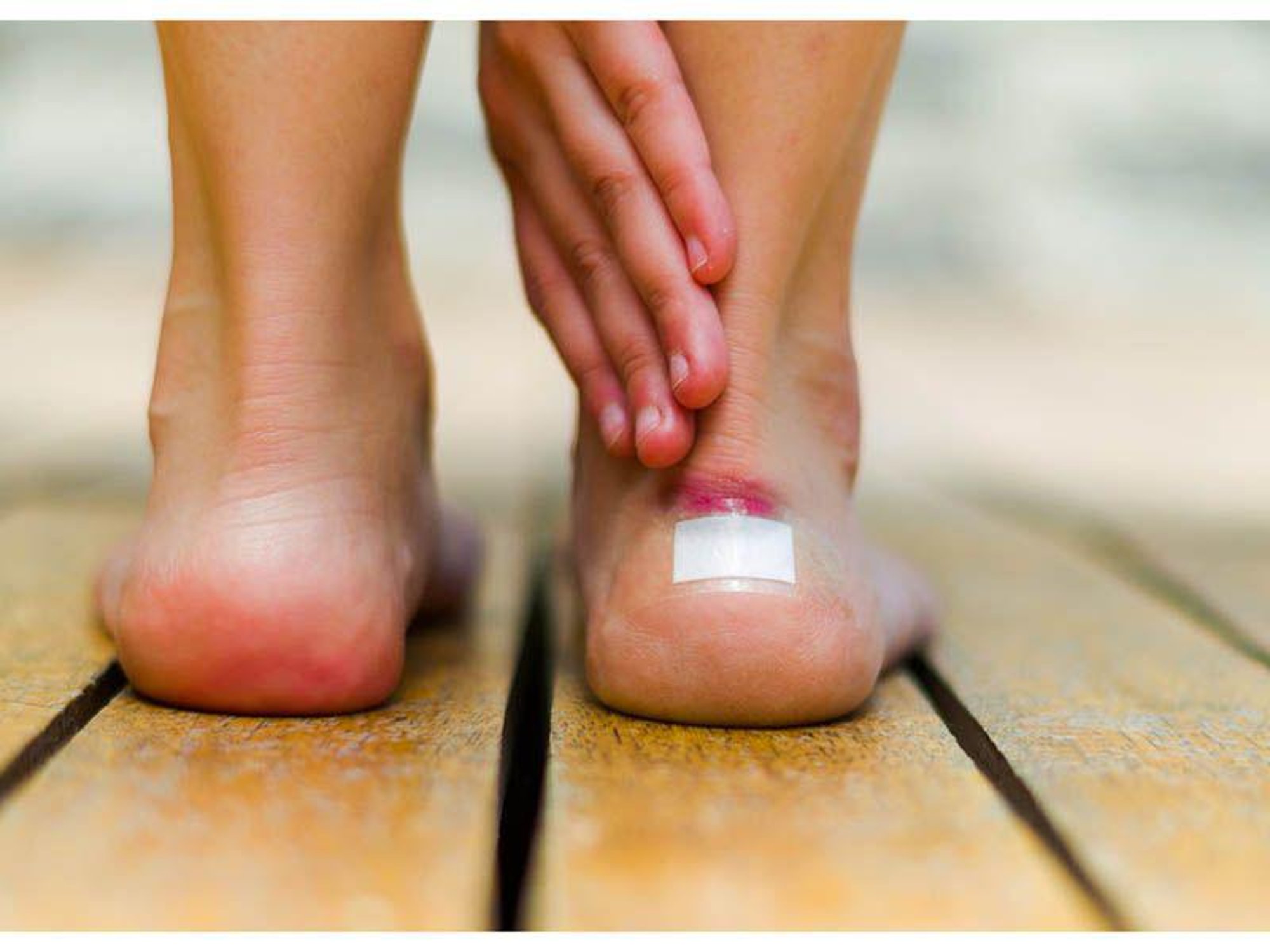Blisters

As anyone who has ever worn ill-fitting shoes knows, blisters are small but painful irritations that occur when the skin is repeatedly rubbed in the same place. Blisters can also result from using a tool that rubs against your hands and fingers, or from getting a serious burn or scrape.
Blisters may look distressing, but they are actually part of the body's normal healing process. Small blisters usually go away on their own. An unbroken blister forms a natural barrier against bacteria and infection, so it's important to keep the skin intact. The best way to protect a blister is to cover it with a small adhesive bandage.
Blisters can become painful when the pressure of the fluid inside irritates the tender skin underneath. Blisters can also become filled with so much fluid that it's hard to prevent them from tearing. In that case, you may want to drain the blister carefully while keeping the skin over it intact.
If the blister is very large, especially if it's caused by a burn, you may want to see your doctor rather than doing this yourself. The larger the blister, the greater the chance of a serious infection after it drains.
What you'll need
- Rubbing alcohol
- Cotton swab
- Sterile needle
- Antibiotic ointment
- Bandage
What to do
Wash your hands and the blister with warm water and soap, being careful not to break the skin over the blister. Then clean the blister using a cotton swab soaked with rubbing alcohol. Sterilize the needle by dipping it in rubbing alcohol.
Next, gently puncture the blister with the needle in several places near the edge, and let the fluid seep out. You may need to press against the blister with the tip of your finger, but be careful not to tear the overlying skin.
Once the fluid has drained from the blister, apply the antibiotic ointment and cover the area with a bandage.
Always watch out for signs of infection: If you see pus or redness, or if the blister becomes more painful or feels hot, call your doctor.
To prevent blisters
Use gloves when you are working with tools that rub your hands or fingers, and always wear socks and shoes that fit properly. Look for shoes that are flexible, allow your toes some wiggle room, and don't rub against your heel. It's also important to try on both shoes, because your feet may not be the same size. If one foot is larger than the other, buy the larger size.
Finally, attach moleskin (a soft adhesive available at drugstores) to the insides of shoes in spots where your toes rub, and consider wearing thick socks with your gym shoes.
References
Handbook of First Aid and Emergency Care, American Medical Association.
MayoClinic.com. Blisters: First aid. http://www.mayoclinic.com/health/first-aid-blisters/WL00008
American Academy of Family Physicians. Blisters, Calluses, and Corns. http://www.kidshealth.org/PageManager.jsp?dn=familydoctor & ps=304& article_set=22053 & cat_id=113
Related Posts
Rubella Elimination Likely to Be Achievable in All Countries
FRIDAY, Sept. 30, 2022 (HealthDay News) -- Rubella elimination is likely to be...
Peanut Allergy in Infants Unchanged After New Guideline Introduced in Australia
WEDNESDAY, July 13, 2022 (HealthDay News) -- Guideline-recommended early peanut...
Kids and Guns
Guns in the home would be 100 percent safe for kids -- if the guns were always...
